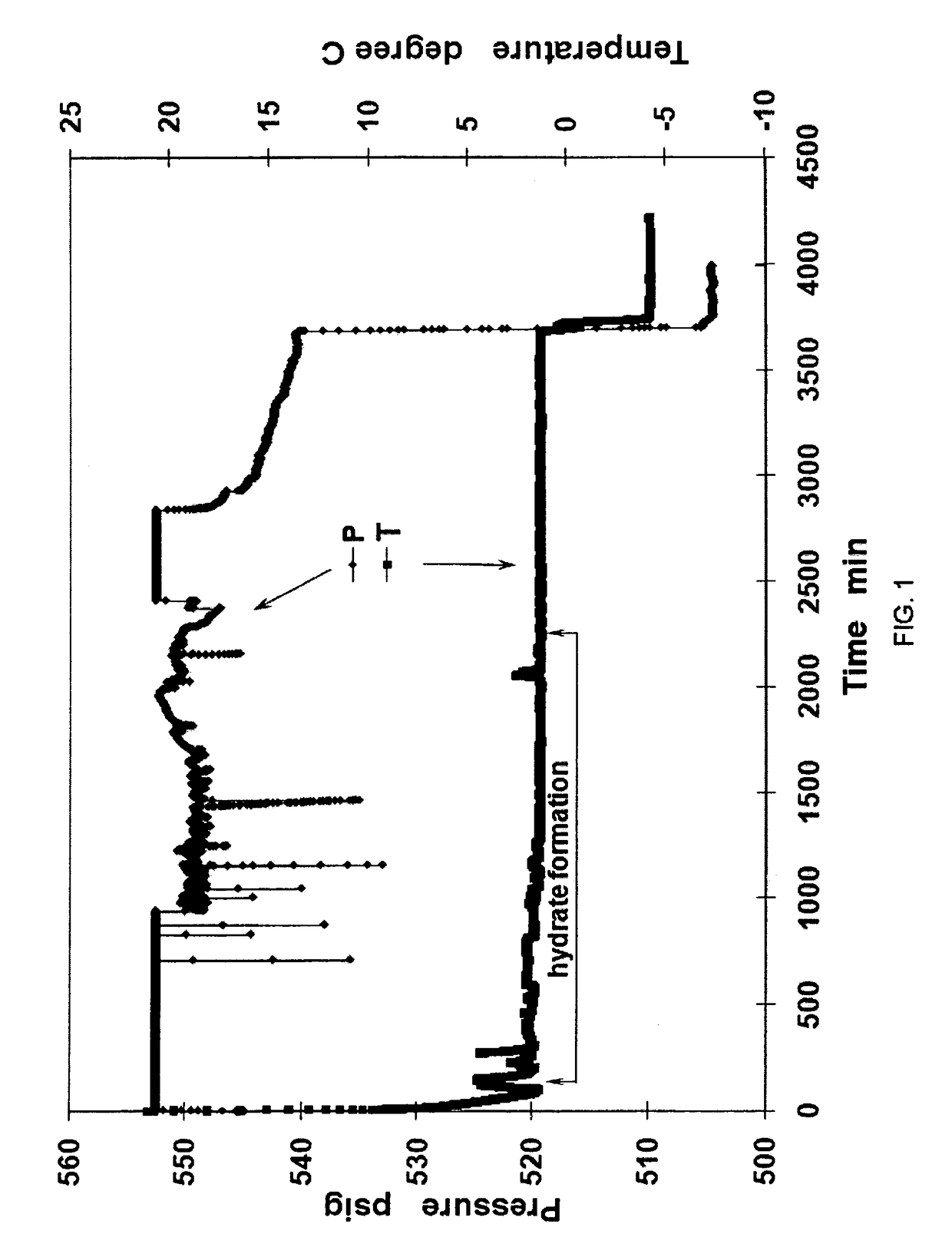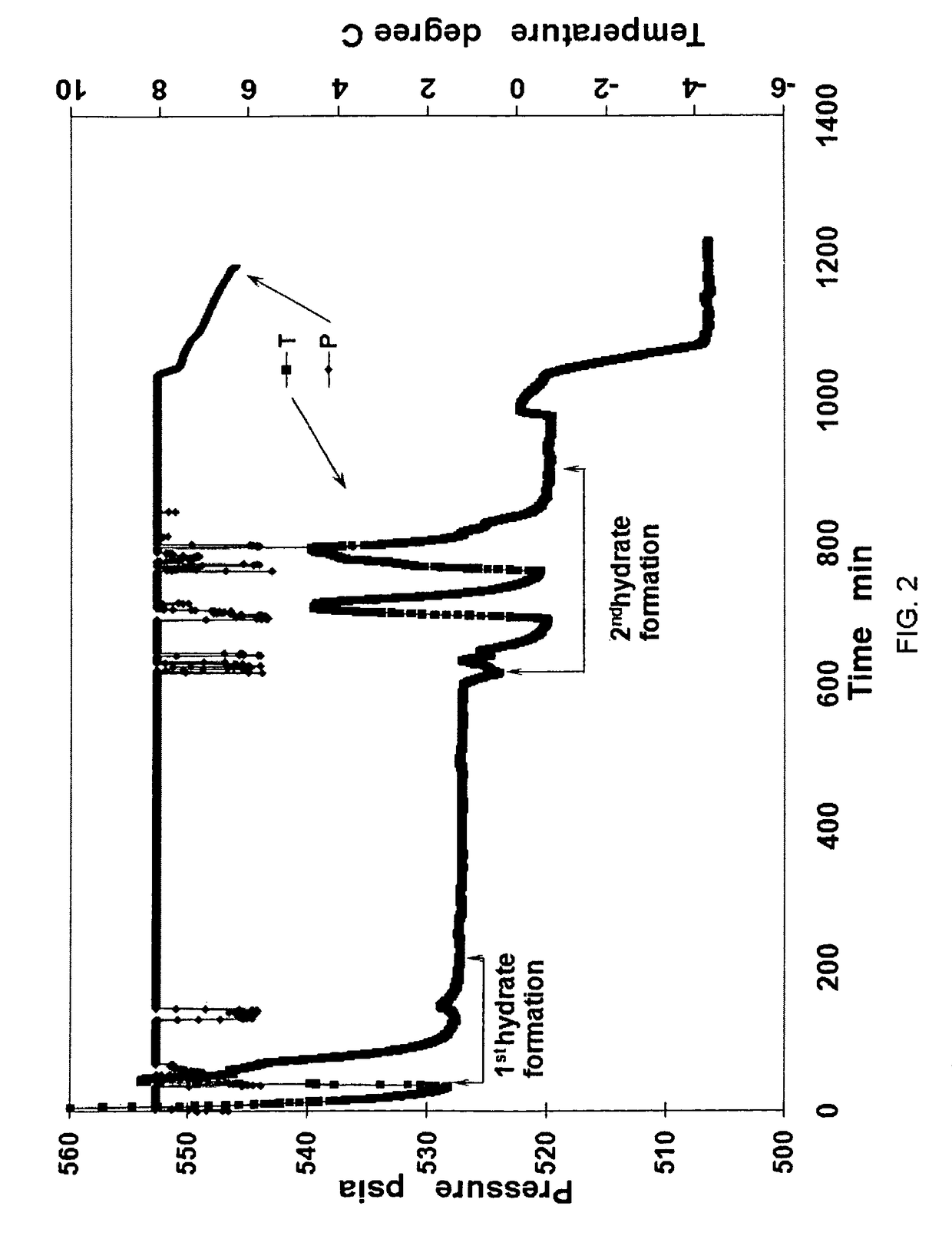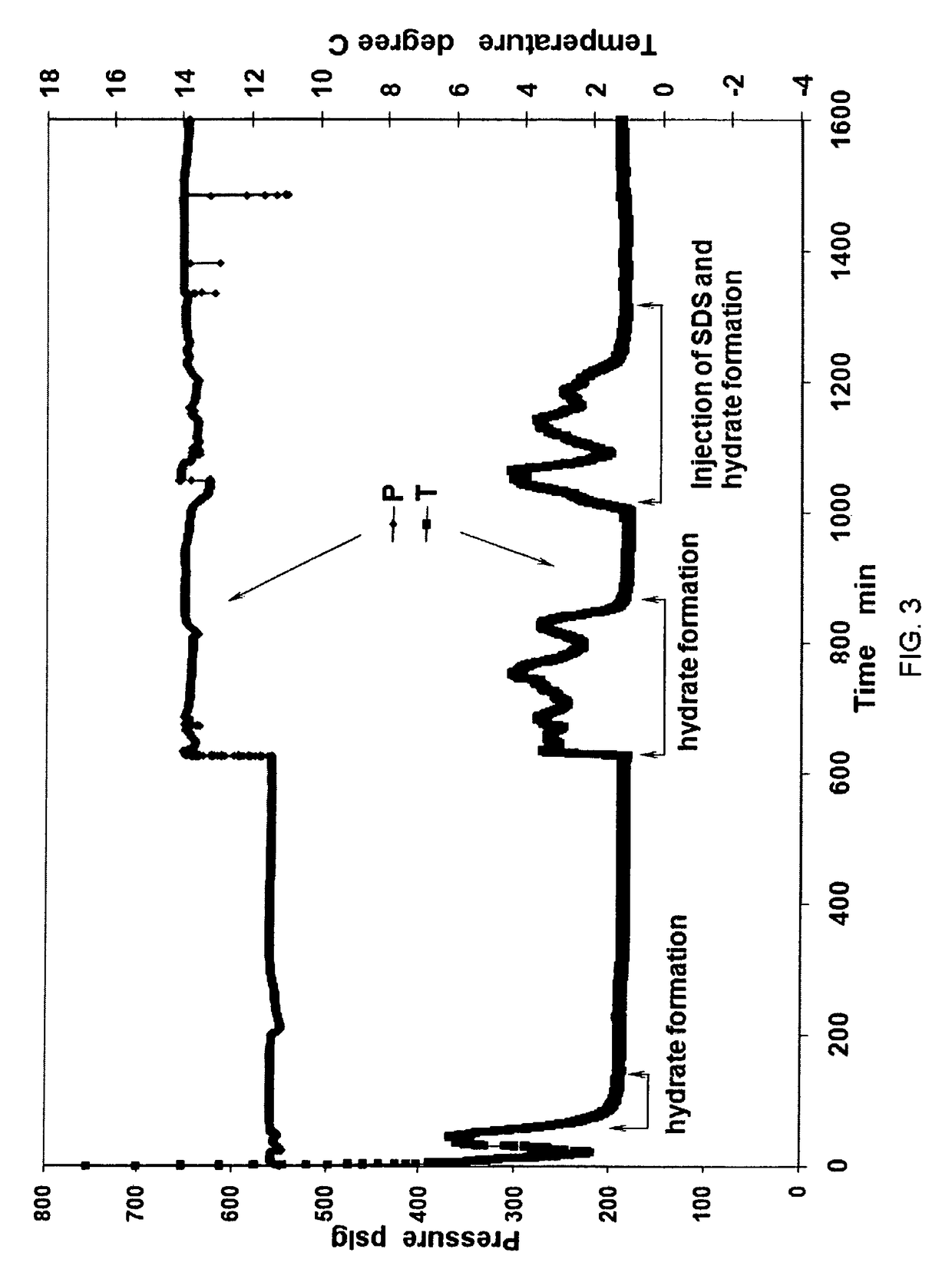System for stabilizing gas hydrates at low pressures
a gas hydrate and low pressure technology, applied in the direction of liquid chemical processes, gas-gas reaction processes, liquid-gas reactions of thin-film type, etc., can solve the problems of high capital costs of liquefied natural gas plants to justify the cost, etc., to achieve low capital costs, economic viability and safety, and minimize decomposition
- Summary
- Abstract
- Description
- Claims
- Application Information
AI Technical Summary
Benefits of technology
Problems solved by technology
Method used
Image
Examples
example 1
[0032]In preparation of methane hydrates, a 1-inch diameter aluminum (Al) pipe of 5.5 inch length (1 inch diameter) was placed in the center of the 500 mL test cell. Methane hydrates were generated from 300 ml of 300 PPM sodium dodecyl sulfate (SDS) distilled water solution at +0.5° C. and under constant pressure of 3.84 MPa methane. After hydrate formation, methane hydrates were cooled down to −5.0° C. Upon depressurization to one atm in 5 seconds, methane hydrates exhibited great stability below −1.0° C. both during and after depressurization. The evolutions of pressure and temperature during hydrate formation are shown in FIG. 1. FIG. 4 is a table showing data values from the Example 1 process.
[0033]FIG. 1 defines the pressure-temperature-time parameters for the formation of methane gas-hydrates that exhibit ultra-stability when pressure is lowered to 1 atm for storage or transportation. The pressure (P) and temperature (T) traces as a function of time reflect the step sequences ...
example 2
[0044]During the formation of natural gas hydrates, a 1-inch diameter copper (Cu) pipe or solid Cu cylinder of 5.5 inches length was placed in the center of the 500 mL test cell. Natural gas hydrates were created in two steps. In the first step, 250 ml of SDS distilled water solution was added to the test cell and hydrates were produced at +0.5° C. under constant pressure of 3.84 MPa natural gas consisting of 90% methane, 6% ethane, and 4% propane. In the second step, when cooled to −1.5° C. at the same constant pressure of 3.84 MPa, natural gas hydrates grew again from the remaining free water. Thereafter, when hydrate formation was completed in the second step, hydrates were cooled down to −5.0° C. Upon depressurization to one atmosphere in 5 seconds, natural gas hydrates exhibited great stability below −1.0° C. both during and after depressurization. Variation of pressure and temperature during hydrate formation is given in FIG. 2. FIG. 5 is a table showing data values from the E...
example 3
[0057]During the formation of natural gas hydrates, a 1-inch diameter Cu pipe of 5.5 inches length was placed in the center of the 500 mL test cell. Next, 250 ml of SDS solution was added to the test cell. At first, natural gas hydrates were created under a constant temperature of +0.5° C. and a constant pressure of 3.84 MPa. Then, secondly the pressure inside the test cell was increased to 4.53 MPa to react the remaining free water into hydrates. When hydrate formation was finished, an SDS solution of up to 100 ml was injected into the test cell to form gas hydrates again at +0.5° C. and 4.53 MPa. After additional hydrate formation, methane hydrates were cooled down to −5.0° C. Upon depressurization to one atm in 5 seconds, natural gas hydrates demonstrated great stability below −1.0° C. FIG. 3 shows the record of pressure and temperature during hydrate formation. FIG. 6 is a table showing data values from the Example 3 process.
[0058]FIG. 3 defines the pressure-temperature-time par...
PUM
| Property | Measurement | Unit |
|---|---|---|
| temperature | aaaaa | aaaaa |
| pressure | aaaaa | aaaaa |
| pressure | aaaaa | aaaaa |
Abstract
Description
Claims
Application Information
 Login to View More
Login to View More - R&D
- Intellectual Property
- Life Sciences
- Materials
- Tech Scout
- Unparalleled Data Quality
- Higher Quality Content
- 60% Fewer Hallucinations
Browse by: Latest US Patents, China's latest patents, Technical Efficacy Thesaurus, Application Domain, Technology Topic, Popular Technical Reports.
© 2025 PatSnap. All rights reserved.Legal|Privacy policy|Modern Slavery Act Transparency Statement|Sitemap|About US| Contact US: help@patsnap.com



